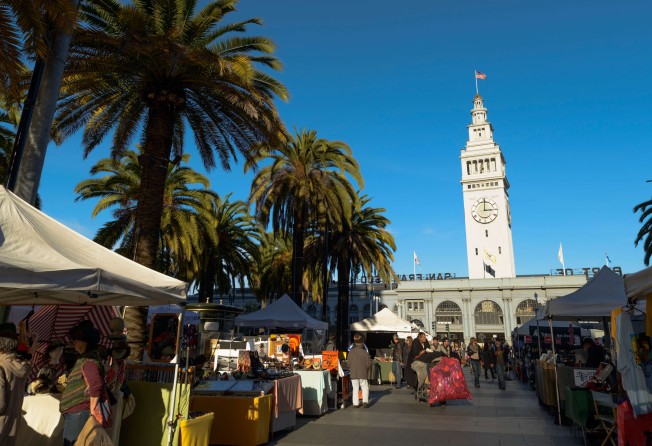
How San Francisco got its Chinese produce
Displaced gold miners from China turned to farming, and grew fruit and vegetables they knew from home to feed California's first Chinatown. It's to their descendants that a San Francisco farmers' market owes its diversity

The diversity of produce at San Francisco’s popular thrice-weekly Ferry Plaza Farmers Market is a metaphor for the city itself. Jalapenos and fava beans sit alongside Pacific Sweetwater oysters and fuyu persimmons, all trucked in from farms just a few hours’ drive away.
As Peter Rudolph, executive chef at Madera, the signature restaurant at Rosewood Sand Hill hotel, in nearby Menlo Park, takes us around the market, he points out several boxes of greens he’s ordered from a stallholder.
“They’re choi sum,” he says, but the small, feather-light, purple-stemmed leaves look nothing like the thick-stalked, green flowering cabbage of the same name sold at wet markets all over Hong Kong.
It turns out the vegetable is indeed Brassica chinensis var. parachinensis, the same variety as the Hong Kong wet-market staple, but this type is picked early, when it’s tender enough to be eaten raw as a salad vegetable.
Among the market stalls we also spot a farmer showcasing waxy Bosc pears and a variety called Yali, sometimes known as sui jing lei (“crystal pears”).
While Asian fusion may have become all the rage in Western kitchens over the past two decades, the history of Chinese fruit and vegetables in northern California goes back much further, to the gold rush of the mid-19th century.
Chinese immigrants arrived in droves, mostly from Guangdong province, to find their fortune in gold mines (the Cantonese nickname for San Francisco is still Gum San, “gold mountain”). These workers were often pushed out of the more productive gold mines and would find work in other industries, such as railroad-building and farming.
According to the University of California, Berkeley’s Bancroft Library Collections, “Chinese immigrants made major contributions to the agricultural and fishing industries of California. They reclaimed swampland in the Sacramento delta, raised and sold vegetables and fruit”.
Although they were not allowed to own land or become United States citizens until well into the 20th century, the Chinese gained a foothold in the Bay area, establishing a Chinatown in the city (the oldest one in the country) as well as building small towns, such as Locke, in the Sacramento-San Joaquin River Delta, just east of San Francisco.

At the Ferry Building market, we are being served lunch at Californian-Vietnamese restaurant The Slanted Door. On the menu are sticky barbecued ribs, chicken pho and gau choi gow – pan-fried dumplings of the type you can find at any dim-sum restaurant in Hong Kong, but these are filled with California-grown Chinese garlic chives.

